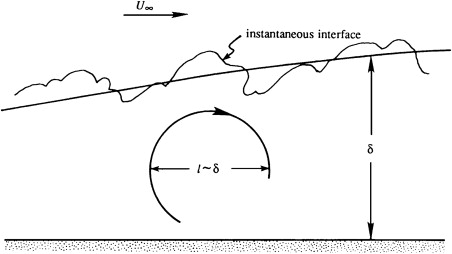Nearly all macroscopic flows encountered in the natural world and in engineering practice are turbulent. Winds and currents in the atmosphere and ocean; flows through residential, commercial, and municipal water (and air) delivery systems; flows past transportation devices (cars, trains, aircraft, ships, etc.); and flows through turbines, engines, and reactors used for power generation and conversion are all turbulent
Turbulence is an enigmatic state of fluid flow that may be simultaneously beneficial and problematic. For example, in air-breathing combustion systems, it is exploited for mixing reactants but, within the same devices, it also leads to noise, and efficiency losses. Within the earth's ocean and atmosphere, turbulence sets the mass, momentum, and heat transfer rates involved in pollutant dispersion and climate regulation
Generic characteristics of turbulence
- Fluctuations
- Nonlinearity
- Vorticity
- Dissipation
- Diffusivity

Turbulent boundary-layer flow showing a typical large eddy of size \( l \), the average layer thickness \( \delta \), and the instantaneous interface between turbulent and non-turbulent (typically irrotational) fluid. Here, as in most turbulent flows, the size of the largest eddies is comparable to the overall layer thickness